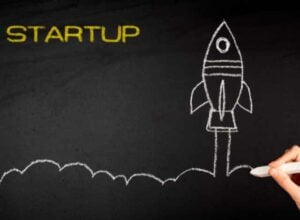Monthly giving programs have emerged as a cornerstone for many nonprofit organizations, providing a reliable and predictable source of funding. Unlike one-time donations, which can fluctuate significantly from month to month, monthly contributions create a steady stream of income that allows organizations to plan their budgets more effectively. This financial stability is crucial for long-term projects and initiatives, enabling nonprofits to allocate resources efficiently and invest in their missions without the constant worry of cash flow.
Furthermore, monthly giving fosters a deeper relationship between donors and organizations, as it encourages ongoing engagement and commitment to the cause. This sustained connection can lead to increased donor loyalty, as individuals who contribute regularly often feel more invested in the outcomes of their support. Moreover, monthly giving programs can significantly enhance an organization’s fundraising strategy by diversifying its revenue streams.
In an era where economic uncertainties can impact charitable giving, having a base of monthly donors can act as a buffer against fluctuations in one-time donations. This diversification not only stabilizes funding but also allows nonprofits to focus on their mission rather than constantly seeking new funding sources. Additionally, monthly giving programs often attract a different demographic of donors—those who may not be able to make large one-time contributions but are willing to commit smaller amounts over time.
This inclusivity broadens the donor base and can lead to increased overall contributions, as the cumulative effect of many small gifts can be substantial. In essence, monthly giving programs are not just a financial strategy; they represent a shift towards building lasting relationships with supporters who are passionate about making a difference.
Key Takeaways
- Monthly giving programs are important for providing a steady and reliable source of income for non-profit organizations.
- Identifying and cultivating potential monthly donors involves understanding their motivations and values, and building relationships with them over time.
- Creating an effective monthly giving campaign requires clear messaging, easy donation processes, and a compelling call to action.
- Providing incentives for monthly donors can encourage more people to join the program and increase their donation amounts.
- Communicating and engaging with monthly donors is crucial for building a sense of community and showing appreciation for their ongoing support.
- Evaluating and improving your monthly giving program involves tracking key metrics, gathering feedback from donors, and making adjustments based on the results.
Identifying and Cultivating Potential Monthly Donors
Identifying potential monthly donors requires a strategic approach that combines data analysis with personal outreach. Organizations should begin by examining their existing donor database to identify individuals who have previously made recurring contributions or have shown a pattern of consistent giving. These individuals are often prime candidates for monthly giving programs, as they have already demonstrated a commitment to the organization’s mission.
Additionally, analyzing donor demographics can provide insights into which segments of the population are more likely to engage in monthly giving. For instance, younger donors may be more inclined to participate in digital giving platforms, while older generations might prefer traditional methods. By understanding these trends, organizations can tailor their outreach efforts to resonate with specific groups.
Once potential monthly donors have been identified, the next step is cultivating these relationships through personalized communication and engagement strategies. This could involve sending targeted emails that highlight the impact of their past contributions and how a monthly commitment could further enhance that impact. Organizations might also consider hosting exclusive events or webinars for potential monthly donors, providing them with an opportunity to learn more about the organization’s work and meet like-minded individuals.
Building a sense of community among supporters can foster loyalty and encourage individuals to transition from one-time donors to monthly contributors. Ultimately, the goal is to create an environment where potential donors feel valued and informed, making them more likely to commit to a monthly giving program.
Creating an Effective Monthly Giving Campaign

Designing an effective monthly giving campaign involves several key components that work together to attract and retain donors. First and foremost, organizations must clearly articulate the benefits of joining the monthly giving program. This includes not only the impact their contributions will have but also the convenience and flexibility that comes with making smaller, regular donations rather than larger one-time gifts.
Crafting compelling messaging that resonates with potential donors is essential; it should evoke emotion and highlight the tangible outcomes of their support. For instance, sharing stories of individuals or communities positively affected by the organization’s work can create a powerful narrative that encourages people to contribute on a recurring basis. In addition to strong messaging, organizations should leverage various channels to promote their monthly giving campaign effectively.
This could include social media platforms, email newsletters, and even direct mail campaigns. Each channel offers unique opportunities for engagement; for example, social media can be used for real-time updates and testimonials, while email campaigns can provide in-depth information about the program and its benefits. Furthermore, organizations should consider implementing user-friendly online donation platforms that make it easy for potential donors to sign up for monthly giving.
A seamless donation process is crucial; if potential donors encounter obstacles or confusion while trying to contribute, they may abandon the process altogether. By combining compelling messaging with effective outreach strategies and user-friendly technology, organizations can create a robust monthly giving campaign that attracts new supporters and retains existing ones.
Providing Incentives for Monthly Donors
To encourage individuals to commit to monthly giving, organizations can offer various incentives that enhance the donor experience and demonstrate appreciation for their ongoing support. One effective strategy is to provide exclusive benefits or recognition for monthly donors. This could include access to special events, behind-the-scenes updates on projects, or personalized thank-you messages from leadership or beneficiaries.
By making monthly donors feel valued and connected to the organization’s mission, nonprofits can foster a sense of belonging that encourages continued support. Additionally, recognizing these donors publicly—through newsletters or social media shout-outs—can further enhance their commitment by showcasing their contributions to a wider audience. Another approach is to implement tiered giving levels that offer different incentives based on the amount contributed each month.
For example, donors who commit to higher monthly amounts could receive premium benefits such as exclusive merchandise or invitations to VIP events. This tiered system not only incentivizes larger contributions but also creates a sense of achievement among donors as they progress through different levels of support. Furthermore, organizations might consider offering matching gift opportunities during specific campaigns or events, where donations made by monthly donors are matched by corporate sponsors or major benefactors.
This not only amplifies the impact of their contributions but also encourages others to join in by highlighting the collective power of monthly giving.
Communicating and Engaging with Monthly Donors
Effective communication is vital for maintaining strong relationships with monthly donors and ensuring they feel connected to the organization’s mission. Regular updates about how their contributions are making a difference can reinforce their commitment and encourage continued support. Organizations should consider sending out monthly newsletters that highlight recent achievements, upcoming projects, and personal stories from beneficiaries who have directly benefited from donor support.
This consistent communication not only keeps donors informed but also fosters a sense of community among supporters who share a common goal. Additionally, utilizing various communication channels—such as social media, email, and even text messaging—can help reach donors where they are most comfortable and engaged. Engagement goes beyond mere communication; it involves actively involving monthly donors in the organization’s activities and decision-making processes.
For instance, organizations might invite these donors to participate in focus groups or surveys that seek input on future initiatives or fundraising strategies. This not only makes donors feel valued but also empowers them by giving them a voice in shaping the organization’s direction. Furthermore, hosting appreciation events or donor recognition days can provide opportunities for face-to-face interaction between staff and supporters, strengthening relationships and fostering loyalty.
By prioritizing communication and engagement, organizations can cultivate a dedicated base of monthly donors who feel connected to the mission and motivated to continue their support.
Evaluating and Improving Your Monthly Giving Program

To ensure the long-term success of a monthly giving program, organizations must regularly evaluate its effectiveness and seek opportunities for improvement. This evaluation process should include analyzing key performance indicators such as donor retention rates, average gift amounts, and overall revenue generated from monthly contributions. By tracking these metrics over time, organizations can identify trends and patterns that inform future strategies.
For instance, if retention rates are lower than expected, it may indicate a need for enhanced communication or engagement efforts with current donors. Conversely, if average gift amounts are increasing, it may suggest that current incentives are resonating well with supporters. In addition to quantitative analysis, qualitative feedback from donors can provide valuable insights into their experiences with the program.
Organizations should consider conducting surveys or interviews with both current and former monthly donors to gather feedback on what they value most about the program and what improvements they would like to see. This direct input can guide adjustments in messaging, incentives, or engagement strategies that better align with donor preferences. Furthermore, staying informed about industry trends and best practices in fundraising can help organizations remain competitive and innovative in their approach to monthly giving programs.
By committing to ongoing evaluation and improvement efforts, nonprofits can ensure that their monthly giving programs continue to thrive and effectively support their missions over time.
FAQs
What is a monthly giving program?
A monthly giving program is a fundraising strategy where donors commit to giving a set amount of money to a nonprofit organization on a monthly basis.
Why is a monthly giving program important for nonprofits?
Monthly giving programs provide a consistent and reliable source of funding for nonprofits, allowing them to better plan and budget for their programs and services.
How can a nonprofit organization build a monthly giving program?
To build a monthly giving program, a nonprofit organization can start by identifying and segmenting their current donor base, creating a compelling case for monthly giving, and implementing a user-friendly and secure online donation platform.
What are the benefits of a monthly giving program for donors?
Monthly giving allows donors to make a meaningful and sustained impact on a cause they care about, while also providing them with the convenience of automated giving and the ability to spread their donations out over time.
How can a nonprofit organization retain and steward monthly donors?
Nonprofit organizations can retain and steward monthly donors by providing regular updates on the impact of their donations, expressing gratitude, and offering exclusive opportunities for engagement and involvement.























